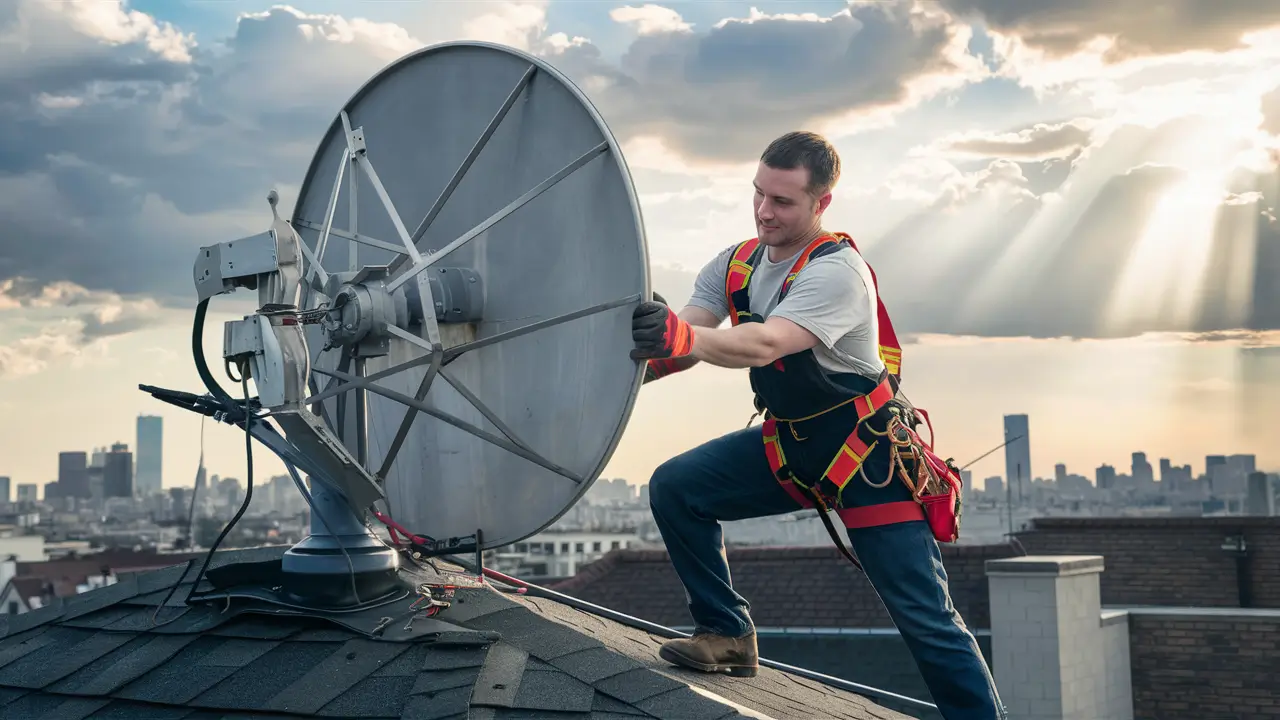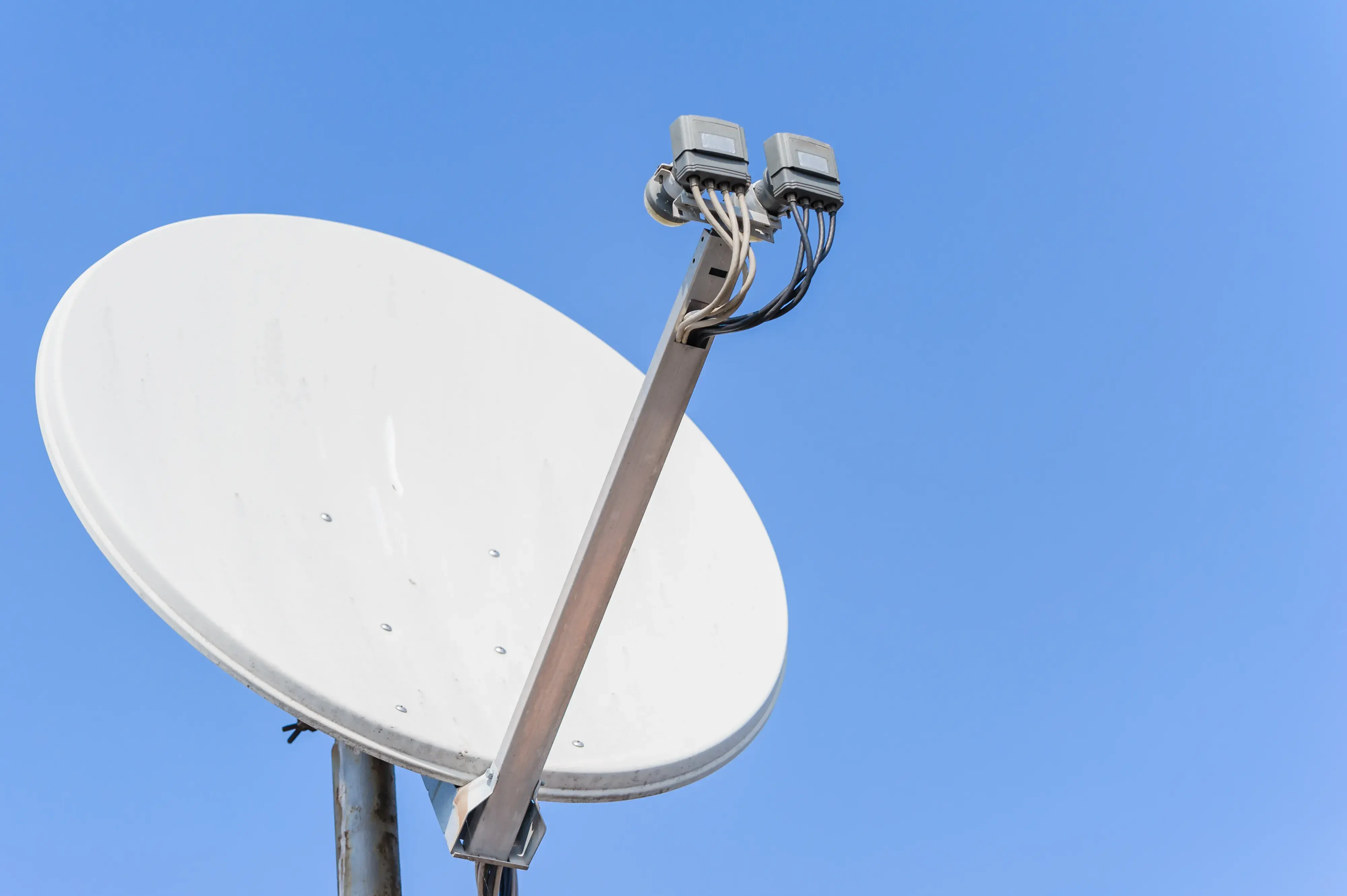-
Posted on: 13 Aug 2024

-
In case you do not require, or you no longer require the satellite dish on your roof, then you can easily dismantle it on your own to avoid incurring the cost of hiring someone to do it for you. However, the removal of a satellite dish from a roof must be done carefully, and with the right equipment to avoid causing further damage to the roof or to oneself. The following is a comprehensive guide on how to go about removing a SATTV INTERNET from your roof.
1. Gather The Necessary Equipment
Before climbing onto your roof to take down your satellite dish, make sure you have all the right equipment you’ll need:
- An extendable ladder of sufficient height to provide a safe reach to the roof.
- Safety harness, ropes or Fall Arrest equipment
- Screwdrivers (flat head, Phillips, Torx)
- Adjustable wrench
- Cordless drill & various drill bits
- Wire cutters/cable snips
- Putty knife
- Goggles and gloves or protective gloves
- Tarp/drop cloth
- Shop vacuum
- Roof patch or liquid nails as the sealant
Ensure you wear all protective gear such as harness every time you go on the roof and do not attempt roofing during a stormy, rainy or when there is lightning.
2. Disconnect The Cables
The process of taking out the satellite dish begins with the removal of all the wiring and cables that are connected to it. Put on your safety harness and climb the ladder to go to the roof and satellite dish. Gently disconnect any exterior cable connections from the satellite arm/LNB if possible. If there are any wires tied together with a zip-tie, you should cut them using the wire cutters.
Trace the wiring from the dish right up to the point where it turns indoors. This may involve pulling the cables from attics or other enclosed regions such as crawl spaces. It’s a good practice to label the wires when you are disconnecting them and even when you are removing them in order to reconnect them back at the right place. If cables are pulled out, make sure to seal all gaps in the roof exterior.
3. Disassemble Satellite Dish Bracket
With cables disconnected, now you can work on the elimination of the actual satellite dish structure. Check the base on which the arm/pole rests while fixing it to the roof – it is normally fastened by lag screws that screw onto the roof rafters or boards. This is done by hiring a power drill which has an appropriate drill bit head to unscrew the lag screws and disassemble the base from the roof
Depending on the model, you may also require a screwdriver to disconnect the arm that supports the dish from the base bracket. Take the arm away from the dish and place it separately. Cautiously replace the unmounted dish on the roof and lower it down the ladder. You have to ensure that you do not drop it or fall while handling the massive object.
4. Repair or Replace Faulty Roofing
With the dish, you now have holes in your roofing that need to be fixed. Inspect it – check for any signs of wood that is badly decayed, rotted or weakened to require replacement. Using a sharp utility knife, trim off and remove any roof flashing, shingles, or membrane that has been punctured past the entry points.
Remove and wash the roof decking prior to laying down new material. Cut out damaged roofing material and replace with new material in the correct measurement. Fill in the gaps with roofing sealant/adhesive and install replacement roofing using a roofing nail gun. Seal the roof by applying the sealant at the seams and around the nails.
5. Roof repair and inspection
Perform a final check for other potential entry and exit points including old screw holes through which gaps can be created and seal these gaps with exterior sealant. Apply sealant to make it shiny and then wipe with wet rag to clean the substance. Also, during your work, inspect entire roof area for any damaged, loose or missing shingles/membrane and make repairs as required.
It is also advisable to seek the services of a professional roofer to go through the work, especially if you had to remove a large commercial dish. They may notice some problems that are beyond your ability to detect. If the roof and assumptions were done professionally then you can be relieved that the satellite dish is no longer there to blow away or leak water.
Proper guideline before removing the satellite dish:
Taking the satellite dish off the roof has its own dangers such as falling or damaging the roof further. Here are added tips for safe removal:
- Only attempt the removal when the weather is fine, that is, no rain, storms, cloudy or foggy day to avoid lightning danger.
- It is recommended to have someone near you to help you handle a ladder, pass you tools, among other things.
- Place ladder on solid, flat surface and ensure that you have locked the stabilizer braces in position.
- Accomplish objectives with added time devoted to performing the job without undue time pressures or distractions.
- Never try to remove a dish if it is very large, unmanageable or something you can’t handle.
- If roof slope is greater than 5/12 (inches of rise per foot), then it is necessary to hire a professional installer.
- If one is in doubt on how to make the roofing repairs, then they should hire a licensed roofing contractor
If you are properly equipped for the job, wear all the necessary safety gear and follow these instructions step-by-step, you will be able to remove the satellite dish off the roof. It is however important to be very careful when working on any roof to prevent hazardous and costly accidents. If necessary, you can always call a professional satellite or roofing company.
Ready to upgrade your TV experience? Call us now at (877) 471-4808 to find the perfect Dish Network plan for you! Don’t miss out on great entertainment—our team is here to help you choose the best package and get you started today.





